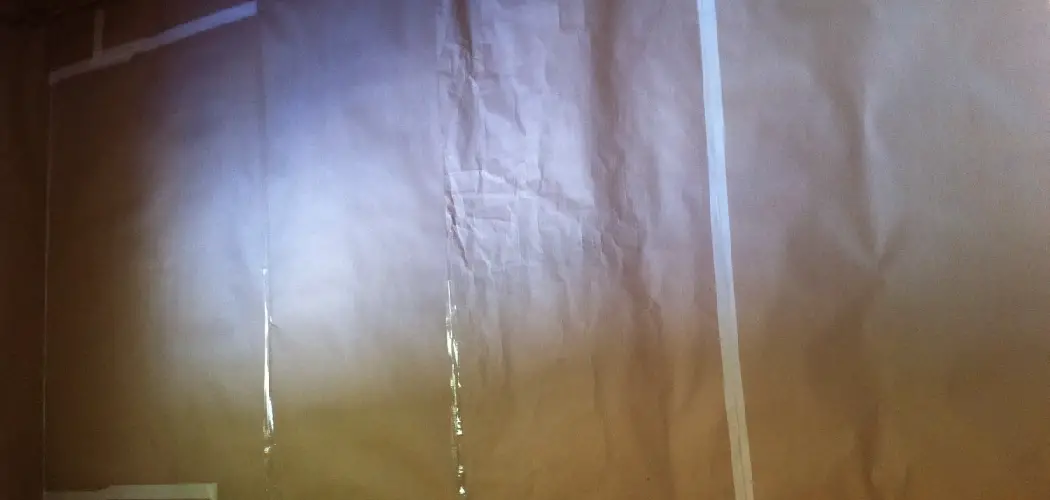If you’re like me, you want to make your home as energy-efficient as possible. One way to do this is by insulating the wall between your garage and house. When you are building a new home, there are many decisions to make. One of the most important is how to best insulate the wall between your garage and house.
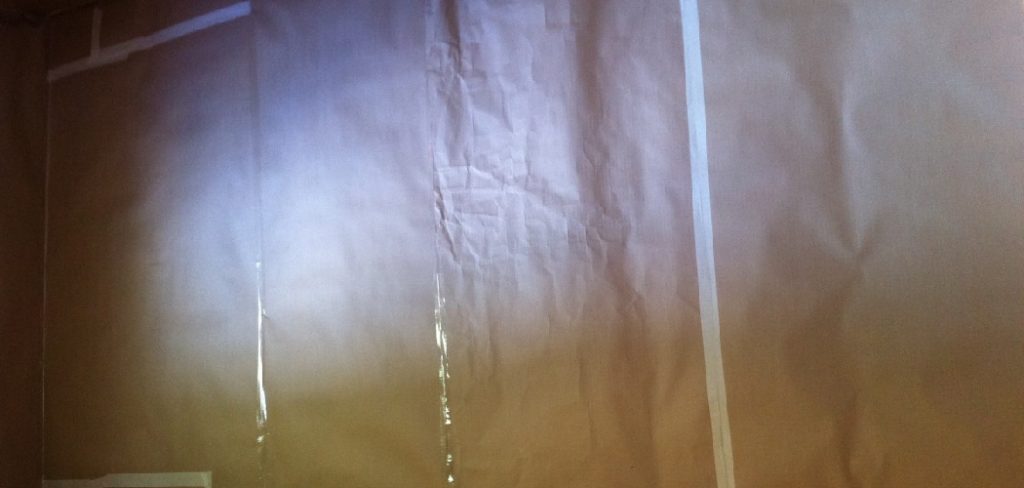
There are a few different ways to do this, and each has its own benefits and drawbacks. In this blog post, we will discuss how to insulate wall between garage and house and help you decide which is best for you. Read on to learn more!
Summary: Insulating the walls between your garage and house is an important step to take if you want to improve the energy efficiency of your home, reduce sound levels between rooms, and protect against pests, dust, and other environmental elements. Proper insulation should include using a combination of materials such as fiberglass insulation batts, rigid foam board insulation, fiberglass insulation rolls, and spray foam insulation.
What’s the Best Way to Insulate a Garage Wall?
The best way to insulate a garage wall depends on several factors, including the type of construction and your budget. Generally speaking, insulation can be applied in three ways: batt insulation, reflective foil insulation, or spray foam insulation. Batt insulation is the most common choice for garages because it is relatively easy to install and provides excellent thermal resistance.
Reflectix foil insulation provides an added layer of protection against high temperatures and drafts. Spray foam insulation is also an option; however, it can be more expensive and difficult to install than other types of insulation.
Whatever type of insulation you choose, make sure that it fits snugly within the wall cavity and has adequate space around light fixtures and outlets so as not to interfere with their operation.
Additionally, be sure to install a vapor barrier in order to prevent moisture from entering the wall cavity. Taking these steps will ensure that your garage walls are properly insulated, providing maximum energy efficiency and comfort.
11 Methods How to Insulate Wall between Garage and House
1. Check for Gaps and Cracks.
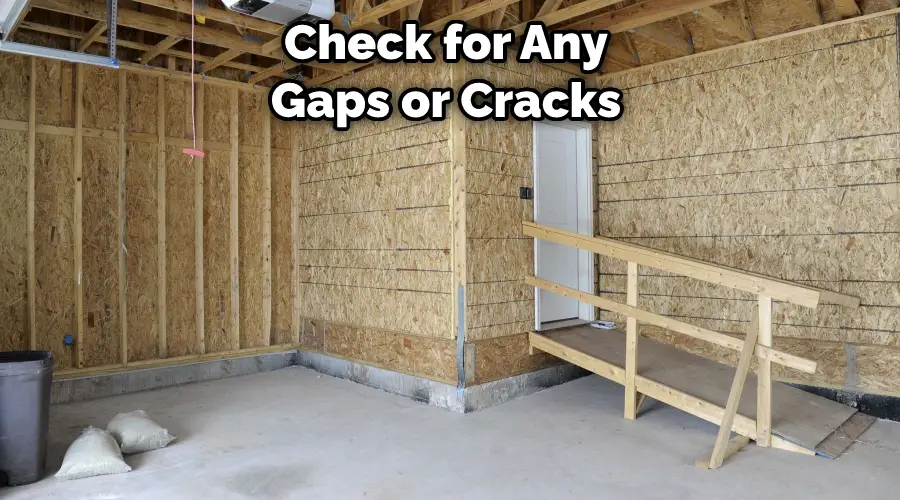
The first step to insulating your wall is to check for any gaps or cracks. These can be found both on the inside and outside of the wall. If you find any, seal them up with caulk or expanding foam. If the gaps or cracks are too big, use the backer rod to fill them in.
2. Add Insulation to the Attic.
If there is an attic space on the other side of the wall, add insulation to it. This will help to keep heat from escaping through the roof. If you’re dealing with a shared wall between two houses, make sure to consult your neighbor before starting any work. Try to use insulation such as fiberglass, rock wool, or cellulose for the best results.
3. Install a Vapor Barrier.
A vapor barrier is a material that helps to prevent moisture from passing through the wall. This can be installed on either the inside or outside of the wall, depending on your needs.
While it’s not necessary, it can help to keep the wall insulated and dry. Make sure to install it at least 6 inches away from the wall. Although, you may want to go further if the wall is exposed to a lot of moisture.
4. Use Weatherstripping around Doors and Windows.
If there are doors or windows in the garage, make sure to use weatherstripping around them. This will help to keep drafts from coming in through these openings.
If possible, use a door sweep to create an airtight seal when the door is closed. Although it may not be the most glamorous job, it can make a big difference in keeping your wall insulated.
5. Install Insulation Batts between Studs.
One of the most effective ways to insulate a wall is to install insulation batts between the studs. This can be done with either fiberglass or cellulose insulation. Try to use the highest R-value insulation that you can find for the best results. Remember to wear protective gear, such as goggles and gloves, while working with the insulation.
6. Use Spray Foam Insulation in Hard-to-Reach Areas.
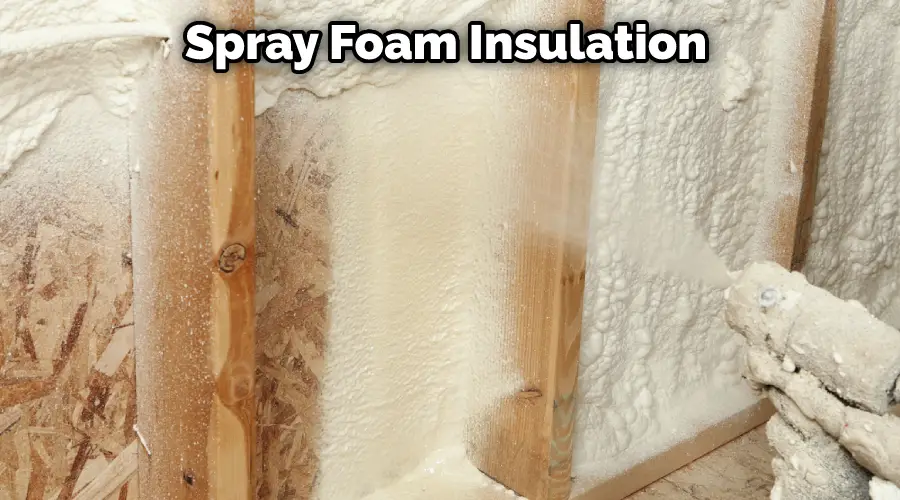
Spray foam insulation is great for filling in hard-to-reach areas, such as around electrical outlets or in corners. Just be careful not to overdo it, as too much spray foam can cause problems later on. If you’re not comfortable with doing this yourself, it’s best to hire a professional. Although it may cost more, it will ensure that the job is done correctly.
7. Cover Bare Walls with Drywall or Paneling.
Once you’ve added insulation to the wall, you may want to cover it with drywall or paneling. This will help to improve the look of the garage and also protect the insulation from damage. While this isn’t a necessary step, it can help to keep the wall insulated and looking great. If you’re not sure how to do this, you may want to hire a professional.
8. Add a Layer of Reflectix over Bare Walls.
Reflectix is a material that reflects heat, making it an excellent choice for covering bare walls in a garage. It’s easy to install and can be found at most home improvement stores. If you’re not sure how to install it, you may want to hire a professional. Make sure to use caution when working with the material, as it can be sharp.
9. Seal around Windows and Doors.
If there are windows or doors in the garage, make sure to seal around them. Use caulk to fill any gaps that may be present. If possible, use a door sweep to create an airtight seal when the door is closed. This will help to keep drafts from coming in through these openings and also improve the insulation of the wall.
10. Install a Garage Door Sweep.
A garage door sweep is a long strip of material that helps to seal the gap between the bottom of the garage door and the floor. This can help to keep drafts from coming in under the door, which will improve the insulation of your walls.
Although it’s not necessary, it can be a great way to make sure your wall is as insulated as possible. You can find garage door sweeps at most home improvement stores.
11. Consider Installing Insulation Board.
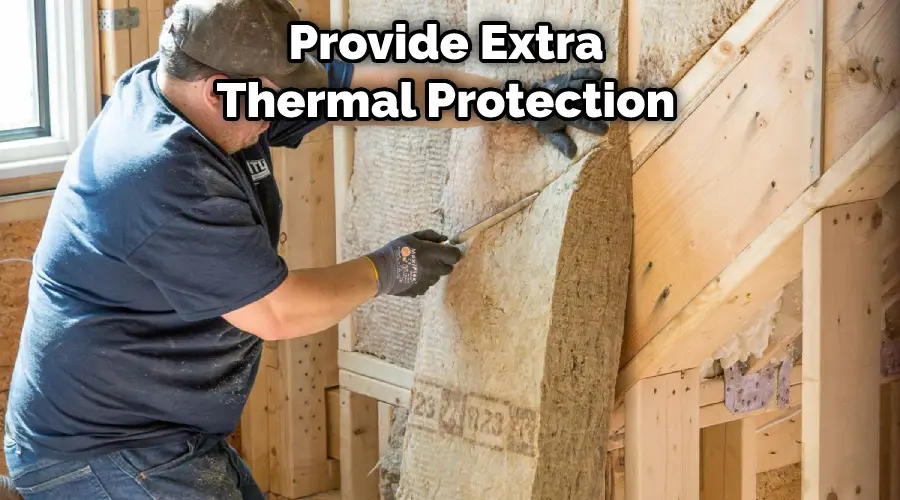
An insulation board is a great way to provide extra thermal protection for your walls. It’s made from polystyrene, which helps to provide an extra layer of insulation that will help keep the wall warm.
If you’re not sure how to install it, you may want to hire a professional. It can be expensive but is worth it if you want the best insulation possible. Make sure to wear protective gear while working with the insulation board.
By following these steps, you can make sure that your wall is properly insulated and will be able to withstand any cold weather. With the right insulation in place, you can enjoy a warm and comfortable garage even during the coldest winter days. It’s important to remember that proper insulation is key when it comes to keeping your walls safe from the elements.
Things to Consider When Insulating Wall between Garage and House
1. Climate:
Consider your local climate when choosing the appropriate insulation type and R-value for your walls. In cold climates, a higher R-value is recommended to keep heat in the home; however, in warm climates, a lower R-value can help reduce energy costs.
2. Moisture Resistance:
When insulating the walls between the garage and house, consider the moisture resistance of the material you use, as it can cause mold growth if not properly managed. Be sure to choose a product that resists water vapor to protect against condensation buildup or other issues related to humidity levels in the air.
3. Fire Safety:
Be sure to check fire safety ratings for any insulation material you are considering using near garages or other potentially flammable areas in the home.
4. Soundproofing:
If you are installing insulation between the garage and house to reduce sound transfer, look for an insulation material with a high STC (Sound Transmission Class) rating. This will help keep unwanted outside noise from entering your living spaces.
5. Cost:
As with any home improvement project, the cost is also an important factor to consider when insulating the wall between the garage and the house. Look at different insulation materials and compare prices to determine which option is the most cost effective for your situation.
You Can Check It Out To How to Reinforce Garage Door
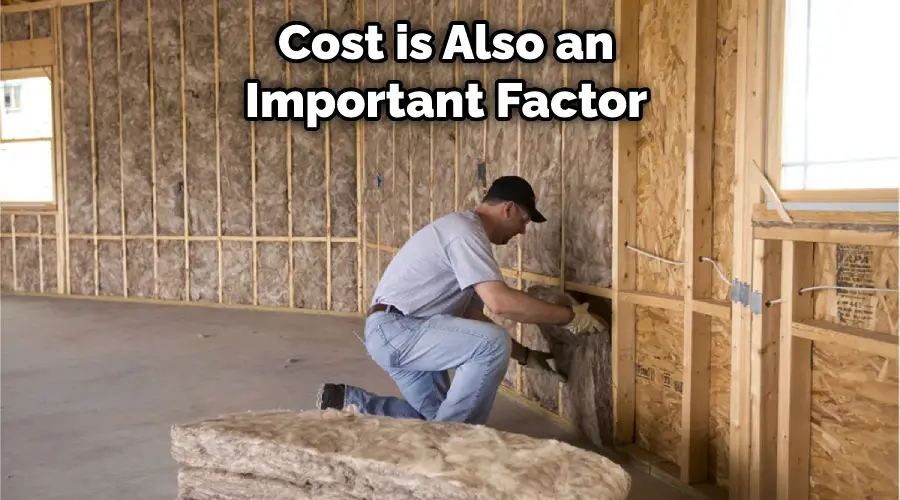
6. Installation:
Consider the complexity of installation when deciding on which product to use for an insulating wall between the garage and the house. Some products may require additional labor costs or specialized equipment in order to properly install. Be sure to factor in this cost when selecting the best insulation solution for your situation.
7. Durability:
Make sure to choose an insulation material that is designed to last. Look at warranties and other assurances of quality when making your selection, as well as any maintenance requirements for the product you use. This will help ensure that your wall insulation remains effective over time without needing frequent replacement or repair.
You Can Check It Out To How to Build Barn Doors for Garage
Conclusion
Garage wall insulation is an excellent way to improve the energy efficiency of your home. By insulating the walls between your garage and house, you can keep heat in during the winter and out during the summer.
This will help you save money on your energy bills and make your home more comfortable year-round. Follow the tips in this blog post on how to insulate wall between garage and house and enjoy a more comfortable and efficient home.
You Can Check It Out To How to Build a Loft In A Garage

